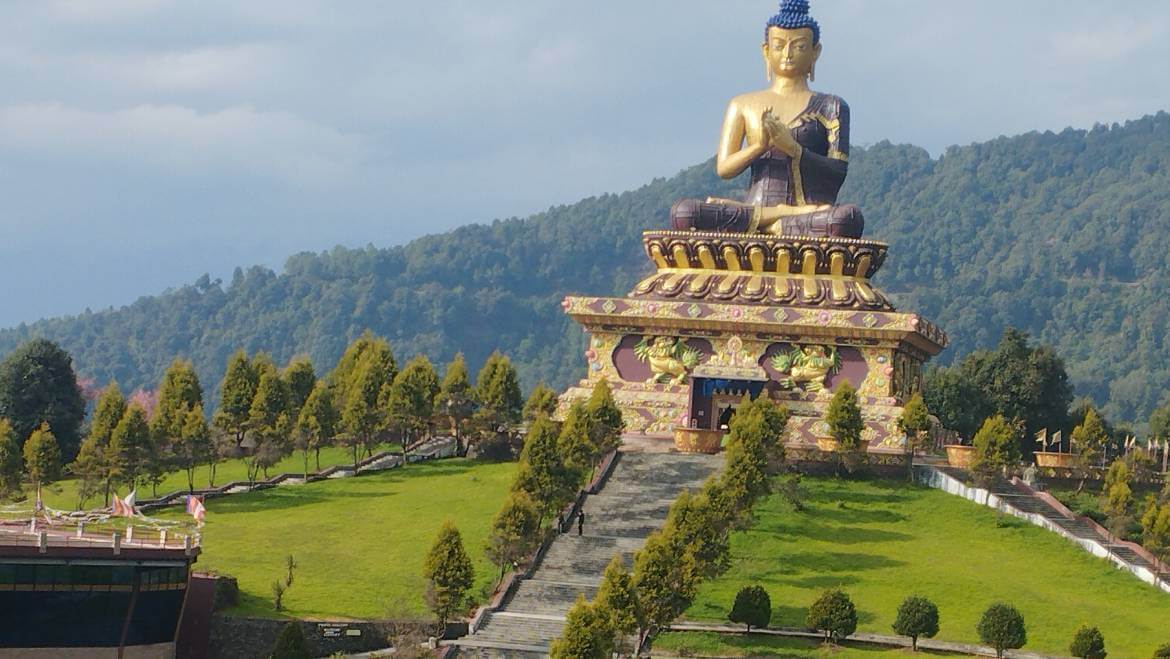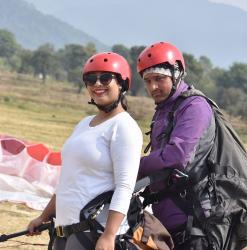Sometimes all you desire from a tour is peace of mind, a place where you can let your hair down, spend time living in the present, and observing the serene and spiritual surroundings. If you are looking for a place where you will find moments of calm, to unwind and revitalize your spirit. Well, look no further, a Buddhist Circuit Tour is just right for you! It is one of those expeditions that instantly transport you to an era of wisdom, serenity and enlightenment. The mighty monasteries, the giant stupas and the ever-so melodic chants of Mantras can make one forget about their anxieties, trials, and stress and can make one lose in the world of divinity helping you heal just about everything.
India as a country has been blessed with the fact that it could be the land which helped to shape Buddhism and its spread across the world. The country has three of the four major sites of pilgrimage that are considered sacred and are highly revered by the followers of Buddhism. It is here at Bodh Gaya that Buddha attained enlightenment, at Sarnath that he gave his first sermon, and at Kushinagar where he attained Mahanirvana and left for the heavenly abode. These sites along with Lumbini in Nepal hold great significance in the life of Buddhists, who come from across the world to visit these pilgrimage sites and form a part of the Buddhist Circuit that helps Buddhist pilgrims to visit these places with ease. Whether you are an ardent devotee of Buddha or simply someone looking for peace, we bring to you all that you need to know about the important Buddhist pilgrimage sites that exist in India.
- Bodh Gaya
- Sarnath
- Kushinagar
- Kapilvastu
- Sankisa
- Shravasti
- Ladakh
- Sikkim
Also Check Out: Popular Buddhist Pilgrimage Tour Packages
Bodh Gaya
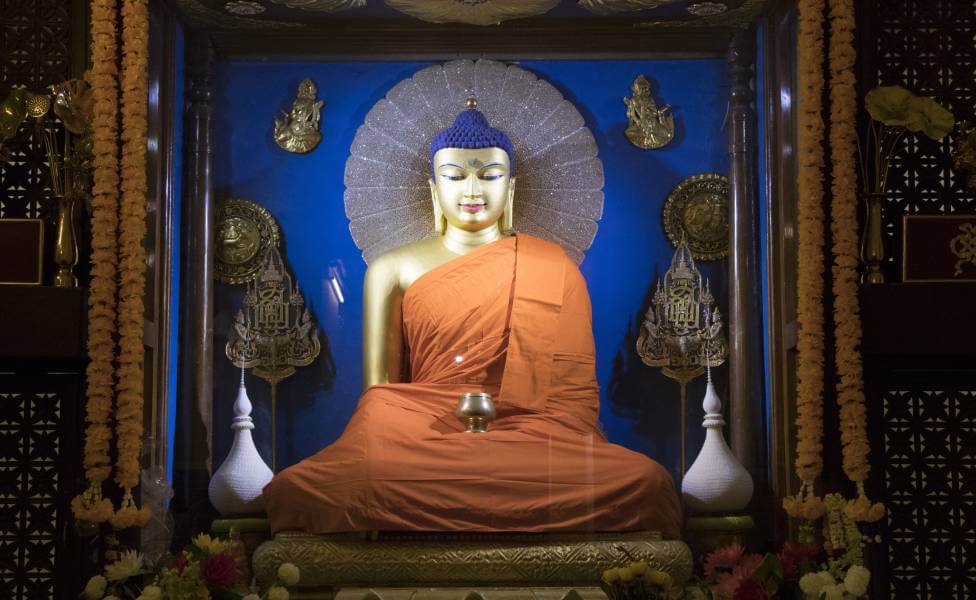
A place of immense importance in Buddhism, Bodh Gaya in Bihar is an important pilgrimage site for the followers of Buddha. It is here in Bodh Gaya, that Lord Buddha attained enlightenment sitting under a Peepal Tree, which later came to be known and worshiped as the Bodhi Tree owing to its significance in the time to come. Bodh Gaya is situated at a distance of about 128 km from Patna, the capital of Bihar, and is one of the most popular tourist destinations in the state. Today, Bodhgaya is an important place of Buddhist pilgrimage in India and has a number of monasteries that were constructed by devout Buddhists from Japan, Thailand, Myanmar and Sri Lanka.
Located in the Gaya district, the major attraction of Bodh Gaya is the Mahabodhi Temple which is also considered to be among the four holy sites that hold importance in Buddhism. The Temple complex is a UNESCO World Heritage Site, with the very first temple in the complex built by the Emperor Ashoka. The complex currently includes the 50 meter tall Temple, the Vajrasana, the honored Bodhi Tree, and other holy sites involving Buddha’s enlightenment. Another popular site that attracts pilgrims and tourists alike is the 80 ft. tall, Great Buddha Statue. Among the tallest Buddha statues in India, Buddha can be seen sitting meditating on a lotus.
Top pilgrimage sites to visit in Bodh Gaya include:
- Mahabodhi Temple Complex
- Great Buddha Statue
- Muchalinda Sarovar
- Wat Thai Buddhagaya
- Indosan Nippon Japanese Temple
Sarnath
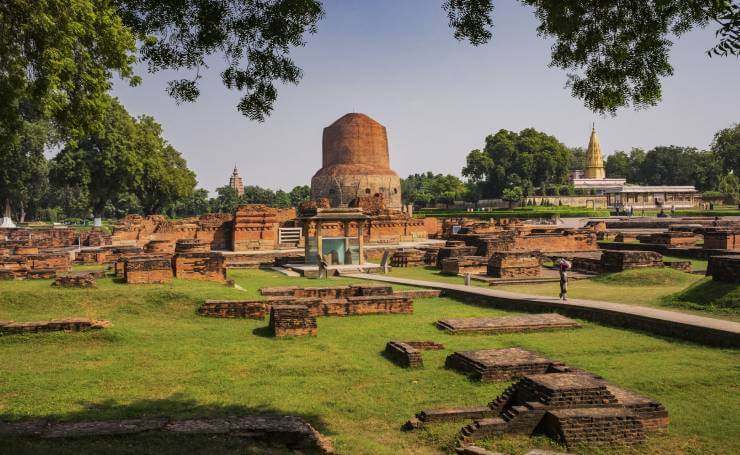
Sarnath is among the four holy sites that are highly revered for the followers of Buddhism for being the place Buddha proceeded to deliver his first sermon after attaining enlightenment at Bodh Gaya. This sermon forms the basis of what we know Buddhism to be today as and is therefore a popular pilgrimage site. Situated at a distance of 10 km from the holy town of Varanasi, Sarnath is one of the most important Buddhist places of worship in India since it led the world on the path of enlightenment and helped many overcome the cycle of suffering and pain.
The Chaukhandi Stupa is one of the major attractions in Sarnath. Said to have been built to mark the site where Buddha met with his first disciples on his way from Sarnath, the Chaukhandi Stupa is a popular pilgrimage site in Sarnath. The mound-shaped monument has been erected by the Gupta Empire and has brick-work all over along with an octagonal tower. Another major attraction in Sarnath is the Dhamek Stupa. It has been built to mark the site where Buddha gave out his first sermon and disclosed to the world the eightfold path to attaining enlightenment. Replacing an earlier structure built by Emperor Ashoka, the current Stupa is said to have been built in 500 CE.
Top Pilgrimage Sites to visit in Sarnath include:
- Chaukhandi Stupa
- Dhamek Stupa
- Mulagandha Kuti Vihar
- Sarnath Museum
- Deer Park
Kushinagar
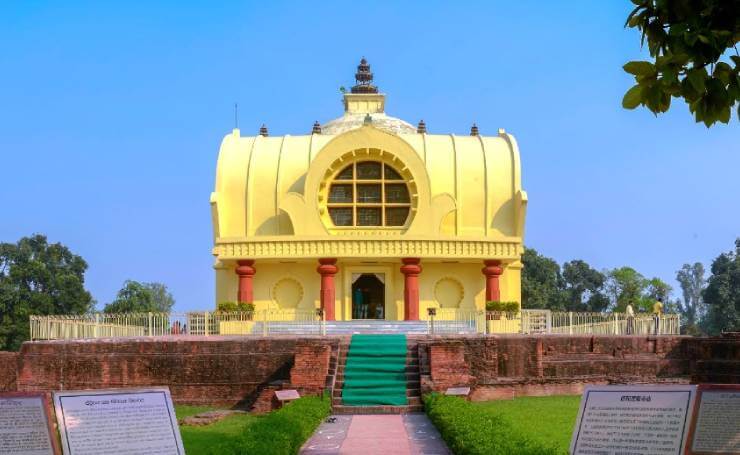
Kushinagar in Uttar Pradesh is where the Buddha breathed his last and attained Mahaparinirvana at the age of 80, and left the earthly abode, achieving the highest stage of salvation. Kushinagar is regarded among the four holy sites in Buddhism along with Lumbini, Bodh Gaya, and Sarnath, which are significant places for the devotees and mark Buddha’s place of birth, where he attained enlightenment, and his first sermon, respectively. Being a site of such importance, Kushinagar is visited by Buddhists from all over the world. At the age of 80, Buddha passed away quietly in the middle of a forest of Sal trees, with his beloved disciple Aniruddha by his side.
After an excavation in 1861 many stupas related to Buddha resurfaced in Kushinagar and are today, amongst the major tourist attractions here. The Ramabhar Stupa is one among them, rising up to about 50 feet tall in height and situated at the site where Buddha was cremated and therefore is held in reverence by the followers of Buddhism. The Mahanirvana Temple at Kushinagar is also a popular pilgrimage site known for a six meters long statue of the reclining Buddha which is said to be a monolithic one, made out of a single block of sandstone and was discovered during an excavation in 1876-77.
Top Pilgrimage Sites to Visit in Kushinagar include:
- Ramabhar Stupa
- Mahanirvana Temple
- Matha Kuar Shrine
- Wat Thai Temple
- Japanese Temple
Kapilvastu
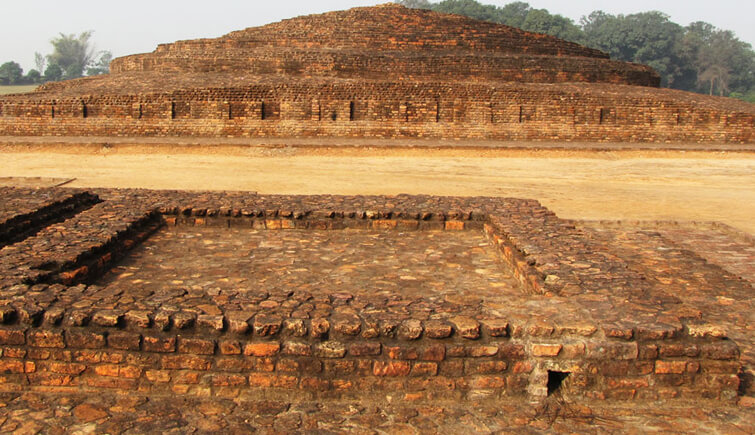
Situated on the Indo-Nepal border and in Siddharth Nagar district of East Uttar Pradesh, Kapilvastu has immense historical significance for being the place where Buddha spent the first 29 years of his life, before he left it all behind in search for answers after witnessing the suffering and pain that the world has to offer. Born into a royal family Buddha was born as Siddhartha Gautama, who was kept away from all sufferings and was only shown the good aspects of the world, fearing he would leave his family and lead the life of an ascetic as per a prophecy. According to the prophecy, Siddhartha would grow up to become either a great king or a renowned spiritual leader. Kapilavastu hence is a place with a lot of importance where several stupas have been found during archaeological excavations along with stone caskets containing relics believed to be of Buddha.
A major attraction in Kapilavastu includes the main stupa complex at Piprahwa that was found during the excavations in 1971-76 during which two relic caskets containing charred bones and ashes were also found, which according to many scholars is believed to be the ash of Buddha himself. Located close to Piprahwa lies Ganwaria, another archaeological site that is also speculated to be where the ancient city of Kapilavastu may have existed and was the residence of King Shuddhodhan, the father of Prince Siddhartha Gautam.
Top Pilgrimage Sites to Visit in Kapilavastu include:
- Piprahwa Stupa
- Ganwaria
- Salargarh
Sankisa
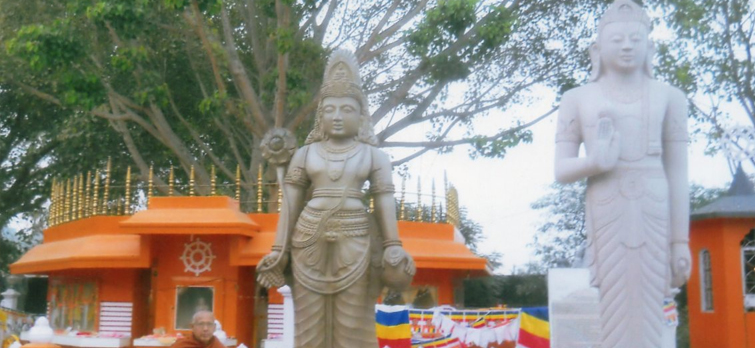
A small town, Sankisa in Uttar Pradesh is a popular Budhhist pilgrimage site in India as it is believed to be the place where Buddha descended after giving sermons to his mother Mayadevi and gods of the Trayastrimsa heaven during the Varsha Vaas. Buddha spent three months in heaven teaching his mother the Dharma, which he could not do on the earth since she passed away early on during his childhood. Buddha, after spreading his knowledge in the Trayastrimsa heaven, descended to earth on a ladder made of lapis lazuli, and is said to have been accompanied by Brahma and Indra alongside.
The ruins of many stupas and monasteries can be found here at Sankisa, which is popularly known for its ancient elephant capital erected by Emperor Ashoka, which exists today with a broken trunk. There is also a Buddha Temple of Sankisa, which is believed to be at the spot where Buddha descended from heaven.
Top Pilgrimage Sites to Visit in Sankisa include:
- Sankisa Buddhist Temple
- Ashoka’s Elephant Capital
Shravasti
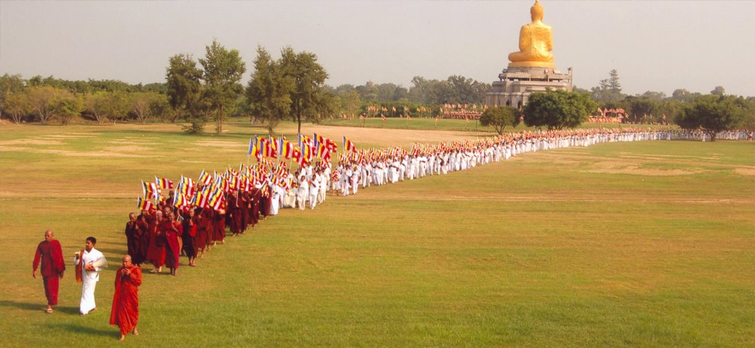
Shravasti, an ancient city and the capital of the ancient Kosala Mahajanapada is now an important Buddhist pilgrimage destination. It is believed that Lord Buddha and his disciples stayed and preached for a total of 24 years in this city. It is believed that it was here that Buddha performed various miracles in front of non-believers of Buddhism which are also known as his ‘Twin Miracle’. Shravasti also holds prominence for being the place where Buddha spent most of his time as a monk and it was here that he taught a major amount of Suttas. Being of such importance, this city has several age-old stupas, monasteries and temples within.
A popular Buddhist pilgrimage site at Shravasti is the Jetavana Monastery, which was built for Buddha by an ardent follower of his named Anathapindika which was then gifted to him. Another popular pilgrimage destination in Shravasti includes Saheth, which is also an archaeological site which contains numerous shrines and stupas dedicated to Buddha. Located near the Jetavana Monastery is a Bodhi Tree, said to have been planted on the insistence of Anasthapitaka who wished to worship it when Buddha would be away from Shravasti. Along with these there are a number of monasteries such as Sri Lankan, Chinese, Myanmar and Thai.
Top Pilgrimage Sites to Visit in Shravasti include:
- Jetavana Monastery
- Ananda Bodhi Tree
- Saheth
- Maheth
Ladakh
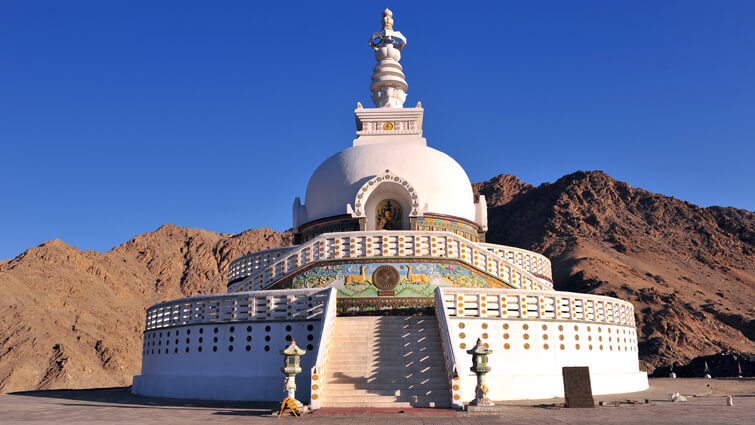
Ladakh displays a major influence of Buddhism in its culture, which can be seen in its monuments, monasteries, oral literature, art forms, fairs and festivals. The age-old culture of Ladakh makes it a place where all occasions be it marriage, birth, or harvesting are marked by an event of feasting, dancing and the singing of folk songs. Buddhism in Ladakh is one of the two major religions followed by its people, equating to almost half of the population. The Vajrayana form of Mahayana Buddhism is what is followed by the people of Ladakh and is also known as Tibetan Buddhism, due to the origin of its practices and involves rituals and rites fromTantric Buddhism, a specialty of Tibetan Buddhism.
With such a high proportion of Buddhist followers, Ladakh has a large number of beautiful monasteries where one can visit to attain a sense of calm and peace. Hemis Monastery is one such monastery that is quite popular, attracting both pilgrims and tourists alike, for its annual Hemis Festival where the monks of the monastery prepare the Chham Dance, a dance-drama-like performance which remains the highlight of the festival. Alchi Monastery is another such monastery that is also popular in Ladakh, and is considered to be among its older monasteries. Other popular pilgrimage sites in Ladakh include the monasteries of Shey, Diskit, Spituk, Phyang and Rangdum.
Top Pilgrimage Sites to Visit in Ladakh include:
- Hemis Monastery
- Alchi Monastery
- Thiksey Monastery
- Lamayuru Monastery
- Phuktal Monastery
Sikkim
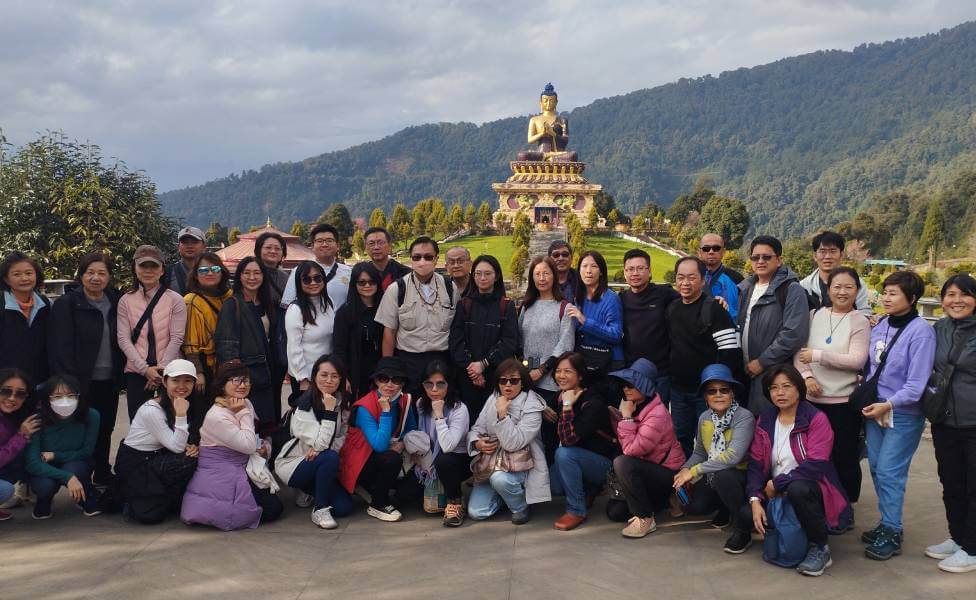
Sikkim is a popular Buddhist destination and has about 200 monasteries belonging to the Nyingma and Kagyu order. Buddhism in Sikkim has not only influenced the local culture but has also influenced the lifestyle of the people. Even though Sikkim never got the privilege to experience the physical presence of the Buddha, yet his words of wisdom influenced life in Sikkim making it one of the more important Buddhist pilgrimages in the country. The religion has an impact on the social and cultural life of the people, glimpses of which can be seen in the state’s art, architecture, monasteries and temples.
Sikkim has an abundance of monasteries and forms a popular attraction for tourists and devotees who come to visit them and experience the tranquility of these monasteries located along the Himalayas. The most popular monasteries in Sikkim include Pemayangtse, Rumtek, Enchey, Phensang, Phodong, Labrang, Tashiding, Pal Zurmang Kagyud, Tsuglagkhang, Ralang, Sanga Choelling and Dubdi. Located atop a hill, the Dubdi Monastery is the first monastery to be established in Sikkim. Surrounded by the dense alpine trees with a view of the Himalayas, the monastery creates a peaceful ambience.
Top Pilgrimage Sites to Visit in Sikkim include:
- Dubdi Monastery
- Enchey Monastery
- Pemayangtse Monastery
- Phodong Monastery
- Ralang Monastery
Other Buddhist Sites in India
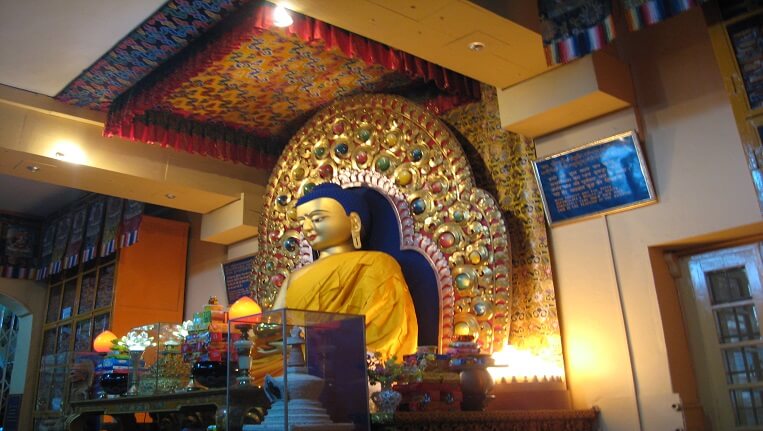
India has remained a major center for the spread of Buddhism throughout the life of Buddha, which has caused numerous Buddhist sites to popup across the country. Apart from the ones mentioned above, India has many other major Buddhist sites as well. Each of these Buddhist places and monasteries in India are worth visiting as they offer an insight into the life of Buddha and will urge one to find a Buddha within oneself.
The Buddhist pilgrimage sites include the following:
- Tabo Monastery in Himachal Pradesh
- Dharamshala, the residence of the Dalai Lama
- Nalanda, Rajgir and Vaishali in Bihar
- Sanchi’s Buddhist complex in Madhya Pradesh
- Ajanta & Ellora Caves in Maharashtra
- Tawang Monastery in Arunachal Pradesh
- Nagarjunakonda, Bavikonda, Thotlakonda, Salihundam, Amaravati in Andhra Pradesh
- Ratnagiri, Lalitgiri and Udayagiri in Odisha
About the author
From the Lake District, Nainital, Nidhi Singh is a travel writer whose love for mountains can be seen in her write ups. Talk about solo travelling, indulging in adventure activities, binging on good food, planning budget trips or the Aurora Borealis and you will get all her attention. It is the wanderlust that keeps her going and if at all she could get one wish granted she would love to live a life less ordinary. Follow her on Twitter, Facebook & Instagram.

 +91-9212777225
+91-9212777225 Plan Your trip
Plan Your trip